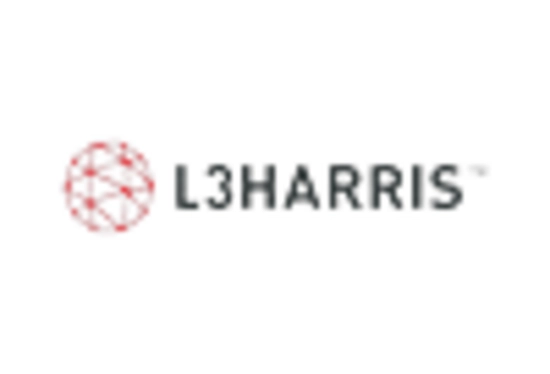Technological Advancements
Technological innovations are significantly shaping the Threat Detection Equipment Market. The integration of cutting-edge technologies such as artificial intelligence, machine learning, and advanced analytics is enhancing the capabilities of threat detection systems. These advancements enable more accurate identification of potential threats and reduce false positives, thereby improving overall security effectiveness. The market for AI-based security solutions is expected to grow at a compound annual growth rate of over 20% in the coming years. As organizations seek to leverage these technologies, the Threat Detection Equipment Market is poised for substantial growth, driven by the demand for smarter, more efficient detection systems.
Increasing Security Concerns
The rising incidence of security threats across various sectors appears to be a primary driver for the Threat Detection Equipment Market. Organizations are increasingly investing in advanced detection systems to safeguard their assets and personnel. According to recent data, The Threat Detection Equipment Market is projected to reach USD 150 billion by 2026, indicating a robust demand for threat detection solutions. This trend is particularly evident in sectors such as transportation, healthcare, and critical infrastructure, where the need for enhanced security measures is paramount. As threats evolve, the Threat Detection Equipment Market is likely to see a surge in demand for innovative technologies that can provide real-time monitoring and rapid response capabilities.
Rising Cybersecurity Threats
The escalation of cybersecurity threats is a critical factor propelling the Threat Detection Equipment Market. With the increasing sophistication of cyber-attacks, organizations are compelled to adopt advanced threat detection systems to protect sensitive data and maintain operational integrity. Cybersecurity incidents have surged, with reports indicating that ransomware attacks alone have increased by over 150% in recent years. This alarming trend underscores the necessity for robust detection solutions that can identify and mitigate threats in real-time. As businesses recognize the importance of cybersecurity, the Threat Detection Equipment Market is expected to experience significant growth, driven by the urgent need for effective defense mechanisms.
Regulatory Compliance Requirements
Stringent regulatory frameworks across various industries are driving the demand for threat detection solutions within the Threat Detection Equipment Market. Organizations are required to comply with numerous regulations aimed at ensuring safety and security, particularly in sectors such as finance, healthcare, and transportation. Non-compliance can result in severe penalties and reputational damage, prompting businesses to invest in reliable detection equipment. For instance, the implementation of the General Data Protection Regulation (GDPR) has heightened the focus on data security, leading to increased investments in threat detection technologies. This regulatory landscape is likely to continue influencing the Threat Detection Equipment Market as organizations prioritize compliance and risk management.
Growing Investment in Security Infrastructure
The escalating investment in security infrastructure across various sectors is a notable driver for the Threat Detection Equipment Market. Governments and private organizations are allocating substantial budgets to enhance their security frameworks, recognizing the importance of protecting assets and personnel. For instance, defense spending has seen a marked increase, with many countries prioritizing the acquisition of advanced threat detection technologies. This trend is not limited to defense; sectors such as retail, banking, and transportation are also ramping up their security investments. As a result, the Threat Detection Equipment Market is likely to benefit from this influx of capital, fostering innovation and the development of next-generation detection solutions.


















Leave a Comment